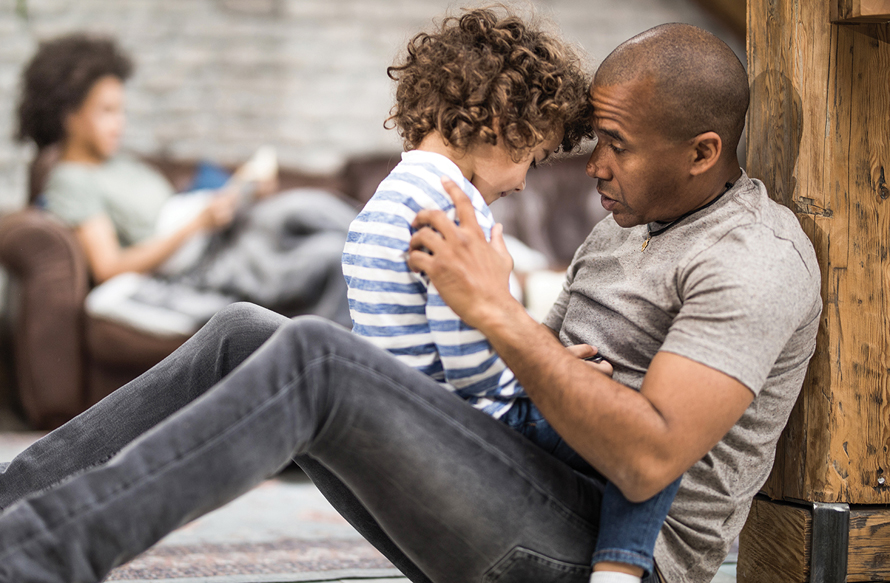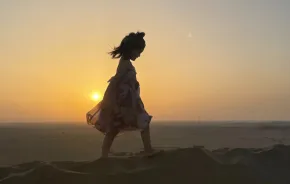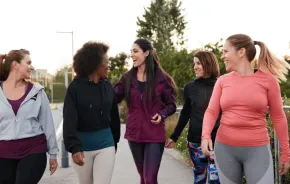
Here’s an unwelcome fact: Most kids will experience bullying at school, even if they’re not directly involved as a victim or perpetrator. Studies show that 70 percent of students witness bullying at school, and from 35 to 60 percent of students are directly involved.
What’s less certain is how those kids will respond to injustice. Will they have the moral courage to stand up for themselves or others? Can they do the right thing without a trusted adult there to coach them?
When kids see a bully in action, we hope they’ll do what 11-year-old Henry from Tacoma did. When Henry, then 8, saw a peer mocking a classmate with disabilities and excluding her from a playground game, he told the bully to stop, calling out the actions as unfair and unkind, says his mom, Libby Buelt.
Today’s school playgrounds need more of this type of moral courage, says Michele Borba, Ed.D., author of “End Peer Cruelty, Build Empathy: The Proven 6Rs of Bullying Prevention That Create Inclusive, Safe and Caring Schools.” “Today, research shows that peer cruelty is escalating and personal entitlement is going up, while empathy is going down,” she says. “It’s discouraging.”
A 2018 Gallup poll found that 77 percent of those surveyed say the country’s moral values are declining, the most negative rating since 2002. At a time when most Americans feel the country’s values are deteriorating, how can we raise kids who show courage when and where it counts?
The building blocks of moral courage
For many, it’s hard to talk about moral courage without picturing those who helped Jews during World War II. The photos, letters and accounts of those rescuers’ personal experiences create an unforgettable lesson in moral courage at Seattle’s Holocaust Center for Humanity. Whether kids tour the center or learn in their own classrooms via the center’s free portable Teaching Trunks, education director Ilana Cone Kennedy hopes students learn that small actions — and small people — can make a big difference.
Teaching kids to identify and name their emotions can help build empathy and moral courage.
“There’s a story of a local Holocaust survivor who says that every day, someone he didn’t know slipped him a sandwich,” says Kennedy. “We hope kids will come away with a sense that their voice matters and that their actions make a difference.”
This spring, Washington Gov. Jay Inslee signed a bill into law that “strongly encourages” Holocaust education in the state’s schools, motivated in part by our region’s recent 400 percent spike in hate crimes. Learning about racial bias and genocide is an important part of social justice education for students and teachers alike, research shows.
University of California Irvine researcher Kristen Renwick Monroe, Ph.D., studies the traits of those who helped Jews escape during World War II and wrote “The Heart of Altruism: Perceptions of a Common Humanity.” Monroe interviewed WWII rescuers and found they had a different self-image than bystanders (those who saw Jews in danger but did nothing) or Nazi supporters.
Monroe found that compared to bystanders and Nazi supporters, rescuers had a more broadly defined sense of identity, viewing themselves as part of a common humanity, rather than a member of an exclusive group. Rescuers also demonstrated a stronger sense of agency, while bystanders tended to have a weak sense of personal control over their lives. In other words, rescuers acted because they believed their actions mattered.
Empathy is another cornerstone of moral courage, says Borba. “I am convinced that empathy is the core to goodness.” The ability to identify with another’s perspective, built from babyhood on through one-on-one interactions, closely bonded relationships and even reading, is an essential trait of those who stand up for others.
Teaching kids to identify and name their emotions can help build empathy and moral courage, too. “When you teach emotional identification, kids learn, ‘He looks sad, I’ll go be a helper,’” says Borba.

What about my kid?
It seems clear that when it comes to moral courage, caregivers can’t simply count on chance. “Parents who raise good kids don’t do so by accident,” says Borba. “You have to be intentional about it.” But since moral courage often means doing the right thing when parents and teachers aren’t looking, how can we know if kids are getting it right?
Sometimes, kids share their experience of standing up for a peer or for themselves on the playground. But moral courage also shows up in smaller, less obvious ways. Caregivers can look for traits, such as honesty and personal responsibility, and encourage growth in those areas, says Richard Peterson, vice president of education at Kiddie Academy, a learning-oriented child-care provider with locations throughout the Puget Sound region.
Watch kids as they play and interact with classmates, says Peterson. Are they easily influenced by others, or do they stand up to peer pressure? When a child reports wrongdoing — their own or that of others — that child takes responsibility for their own actions and shows honesty; they’re displaying moral courage, he says.
Other examples are doing homework or chores without being reminded, or turning in some object you found that doesn’t belong to you, he notes. “Even the simplest action, such as picking up trash instead of stepping over it or leaving it for someone else to deal with, shows moral courage.”
Growing goodness
If your child falls a little short on these basic measures of morality, or if you’d simply like to encourage moral growth, there’s good news. New research shows that the traits we associate with moral courage — empathy, self-control and honesty — get stronger with practice and effort.
Stanford University psychologist Carol S. Dweck, Ph.D., wrote “Mindset: The New Psychology of Success,” about her decades of research on intelligence and effort. Her now-famous research found that children with a growth mindset (the understanding that intelligence can be developed through effort) were more successful than those who believed that intelligence was fixed.
Teaching kids about character means helping them understand all the ways people can contribute to or resist injustice.
These days, she’s applying this concept to the development of moral traits, such as self-control. In one of her recent studies, Dweck found that preschoolers learned to resist temptation and delay gratification after listening to a story that has a character who struggles with waiting, but eventually finds it energizing.
If, as Dweck’s research shows, good character can be taught, then anti-bullying education programs in schools can help guide growth. But it’s important that anti-bullying education doesn’t focus too narrowly on the role of the bully — a role few kids identify with. Teaching kids about character means helping them understand all the ways people can contribute to or resist injustice, notes Kennedy.
“There are different roles we all can play — perpetrator, bystander, upstander — and people can move from one category to the next,” she says. “It’s important to know which role you’re in for each situation, and what you might be able to do differently.”
Many effective anti-bullying programs have a strong peer advocacy element — in other words, they teach kids to stand up for other kids — because this approach is proven to work. Research shows that when other kids intervene, most bullying stops within 10 seconds. Like any strategy, though, peer advocacy only works when kids have the skills and knowledge they need to take action.
Henry’s courage added fuel to the school’s ongoing dialogue around bullying, inclusion and appropriate playground behavior. His class started a sportsmanship club; another third-grade classroom adopted an inclusive “You can’t say you can’t play” guideline for recess and afterschool games.
When it comes to homegrown goodness, talking with your child about your values and modeling those values yourself are hard to beat. “Today’s kids are really facing an uphill challenge in relationship engagement,” says Buelt. “We talk a lot at home about our responsibility to try and make the world a better place. I’m very proud of the person Henry is and continues to become.”
The Brave Bookshelf: Books that build moral courageFor readers of all ages “What Happens Next” by Susan Hughes “Henry the Boy” by Molly Felder “Something Happened in Our Town: A Child’s Story About Racial Injustice” by Marianne Celano, Ph.D., Marietta Collins, Ph.D., and Ann Hazzard, Ph.D. “The Proudest Blue: A Story of Hijab and Family” by Ibtihaj Muhammad “Luca’s Bridge/El Puente de Luca” by Mariana llanos “Martin & Anne, the Kindred Spirits of Dr. Martin Luther King, Jr. and Anne Frank by Nancy Churnin “The Brave Cyclist: The True Story of a Holocaust Hero” by Amalia Hoffman “Brave” by Stacy McAnulty “Emmanuel’s Dream: The True Story of Emmanuel Ofosu Yeboah” by Laurie Ann Thompson “I Walk With Vanessa: A Story About a Simple Act of Kindness” by Kerascoët For tween and young adult readers “Wonder” by R.J. Palacio “Diary of a 5th Grade Outlaw” by Gina Loveless “Take the Mic: Fictional Stories of Everyday Resistance,” edited by Bethany Morrow “We Are Lost and Found” by Helene Dunbar |











